Industrial woven wire mesh allows manufacturers to leverage the customization and durability of wire mesh on a large scale. This versatile material features characteristics that benefit countless industries, whether purchasing rolled goods or
cut-to-size pieces.
This ultimate guide was designed to educate you on everything you need to know about industrial woven wire mesh and help distinguish if it’s right for you.
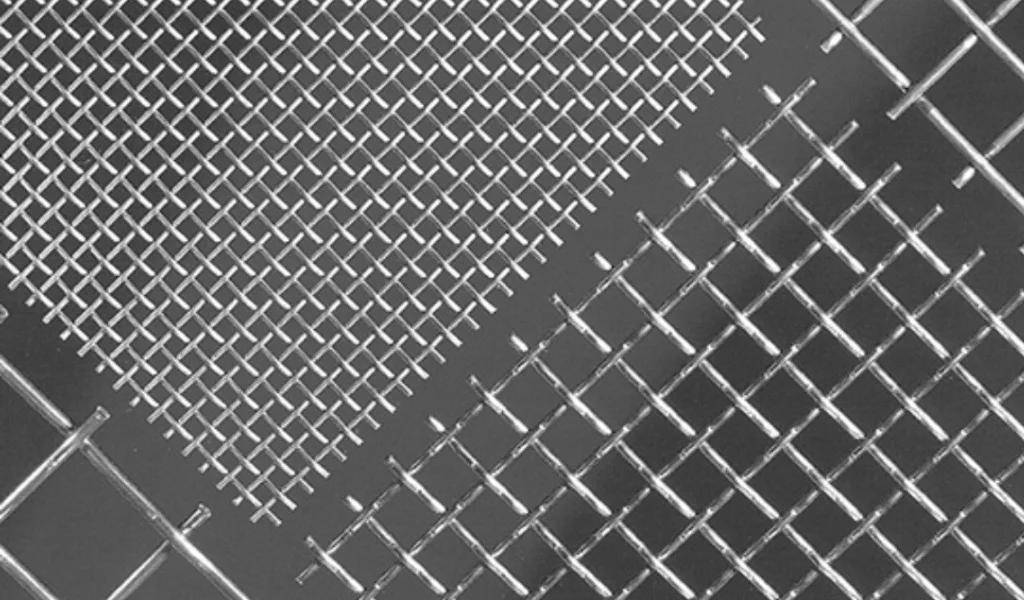
Industrial woven wire mesh, also referred to as industrial metal mesh, is defined as a network of wires that are interlocked together to form precise mesh opening after being woven during a stringent weaving process. To ensure maximum performance is achieved, all aspects of the mesh’s profile, including the weave pattern, wire diameter, opening size, and post-weaving processes, are methodically planned out before setting up the weaving loom.
Now, industrial woven wire mesh can be constructed from various metallic alloys. While 304 and 316 stainless steel stand as the most widely used alloy, you can also employ other alloys such as nickel, Hastelloy, and titanium.
To that end, what separates industrial wire mesh from other woven wire mesh solutions is that industrial mesh is produced as rolled goods or cut-to-size pieces.
Pressure Welded Screen, Type F
SPW – Single Plain Dutch Weave
The SPW single plain Dutch filter cloth weave pattern features reduced spacing between the weft wires throughout the mesh. As a result, the mesh has increased durability with five times the amount of weft wires than warp wires.
DTW-S – Dutch Twilled Weave
The DTW-S Dutch twilled weave pattern employs a 2/2 twilled weave that traditionally involves positioning the weft wires closely. To facilitate the close weft wire placement without impacting throughput, this particular weave pattern uses thinner wires in the weft direction.
RPD-S – Reverse Plain Dutch Weave
The RPD-S reverse plain Dutch weave pattern applies reverse wire diameter parameters to a plain weave. The entails using warp wires that are thinner than the weft wires to position the warp wires closely together, delivering adequate durability and throughput.
TRD-S – Twilled Reverse Dutch Weave
The TRD-S Twilled reverse Dutch weave pattern is an identical weave to a reverse plain Dutch weave. The most significant difference is that this weave pattern utilizes a 2/2 twilled weave.
You are left with a filter cloth that does not distort as much in the warp direction when compared to a plain weave.
BMT/BMT-ZZ-S – Broad Mesh Twilled Dutch Weave
The Broad Mesh Twilled Dutch Weave consist of an innovative 2/2 weave that features weft wires that are more spaced out than other filter cloth weave patterns. This helps works to increase the amount of achievable filtration surface area.
You can also apply a unique zigzag pattern if you desire a filter cloth that has increased stability and throughput.
RPD HIFLO-S – High-Performance Weave
The RPD HIFLO-S weave pattern is a state-of-the-art three dimensional weave pattern that offsets two layers reverse diameter plain weave filter cloth. Because these two layers are essentially stacked on top of one another, both the filtration surface area and amount of pore openings are doubled.
To that end, the amount of stability, flowrate, and accuracy that RPD HIFLO-S delivers has yet to be achieved by a two-dimensional weave pattern.


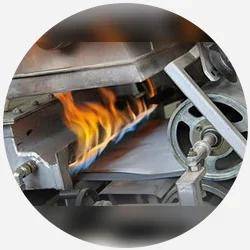
Heat Treatment
Industrial wire mesh is often purchased by manufacturers that handle the forming and fabrication of wire mesh components in-house. To make this process easier and ensure the mesh maintains its shape, the mesh should either be annealed or sintered.
Annealing involves the mesh being heated to reduce the internal stress and overall hardness of each wire. As a result, the wires are softer and more malleable, making it the ideal heat treatment for mesh that will be formed into various shapes.
Sintering involves heating the mesh to just below its melting point while simultaneously applying tremendous amounts of pressure to the mesh. This helps to create a more permanent bond at the cross-sections of the mesh, making it the ideal heat treatment method when mesh opening accuracy is vital.
Read "Annealing vs. Sintering Wire Mesh: Which Is Best for Me?" to learn more about heat treating your wire mesh filters.

Ultrasonic Cleaning
Some applications require the use of material free of loose debris that would hinder the ability to render desirable results. Ultrasonic cleaning can be applied to remove dust, lint, oils, and other forms of unwanted debris.
During an ultrasonic cleaning, the mesh is placed in a unique solution and subjected to high-frequency vibrations that heat the solution and shake off debris. As a result, you're left with pristine wire mesh.
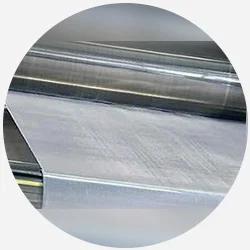
Calendaring
Calendering is a process in which the mesh is rolled through a machine while being subjected to a tremendous amount of pressure and heat. In turn, the knuckles of the wire mesh cross-sections are flattened, leaving you with a smoother, more stable mesh.
Chapter 6
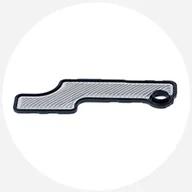
Automotive Industry
As industrial woven wire mesh allows manufacturers to buy mesh in large quantities and form the mesh themselves to ensure it fits their needs, it is perfect for several automotive applications.
A popular use for in-house wire mesh fabrication is transmission filters that prevent extraneous material from entering and damaging the various moving parts. Wire mesh is particularly useful as its metallic composition allows it to withstand extreme conditions such as harsh temperatures and tremendous pressure.
Another popular application in recent years is interior design mesh. Wire mesh allows car manufacturers to furnish car interiors with awe-inspiring, semi-transparent design elements that compliment lustrious trimming, eye-catching illumination systems, and protective enclosers.
Read "Woven Wire Mesh in the Automotive Industry" for more insight into how wire mesh benefits the automotive industry.
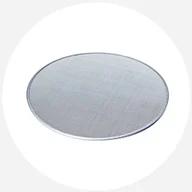
Aviation & Aerospace
From the fuel powering the jet engines to the air circulating through the cabin, there are several elements to aviation that can benefit from wire mesh. As it delivers optimal precision and customization, industrial woven wire mesh rolls are often used to fabricate custom filter elements to purify fuel and even the circulating air.
In addition to purification, manufacturers within the aviation and aerospace industry employ wire mesh when fabricating protective components. Wire mesh provides the durability needed to protect various parts of an aircraft, such as the engines and the internal control systems while minimizing the heavyweight that is often associated with other materials like perforated plate.
From an aesthetic perspective, industrial wire mesh can also serve as a design material. This is because the wire mesh can achieve a three-dimensional look that creates a one-of-a-kind experience while also working to absorb the noises from the engines and passengers.

Plastic Extrusion
Woven wire mesh features excellent heat resistance and accuracy characteristics that make it ideal for filtering out unwanted contaminants from molten polymers. The customization capabilities of industrial wire mesh allow you to implement pore openings tailored to the known contaminant particle size, reducing the chance of faults and product failure without reducing the throughput of your extruder system.
Now, there are two ways in which you can implement industrial wire mesh during plastic extrusion.
You can either order bulk stripes of wire mesh that are cut to accommodate a continuous belt changer. You can also purchase several large rolls of mesh and use them to assemble screen packs that fit a slide plate changer or a hydraulic piston changer.
Read "The Benefits of Extruder Screens In Plastic Extrusion (With Video)" for more insight into how wire mesh benefits the plastic extrusion process.